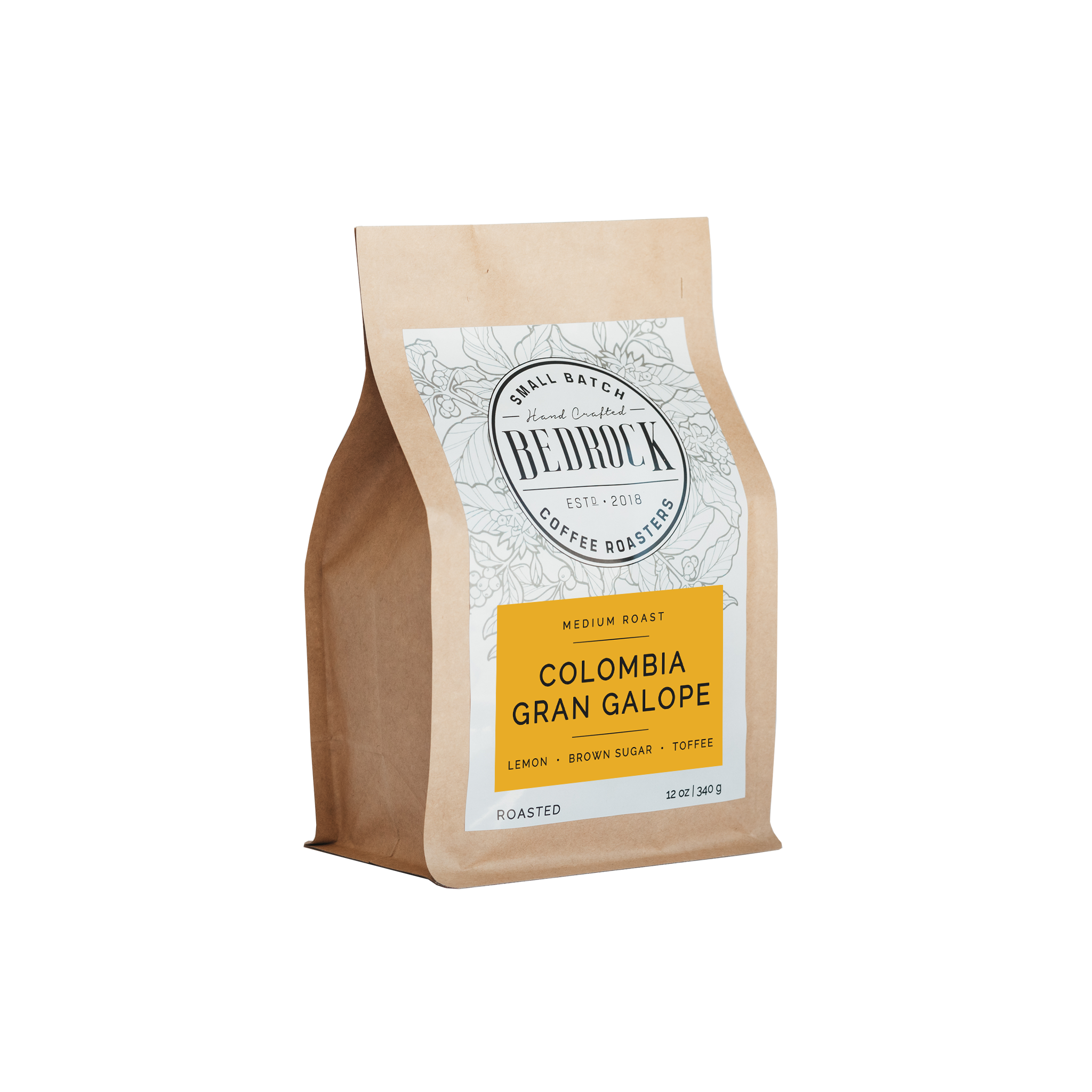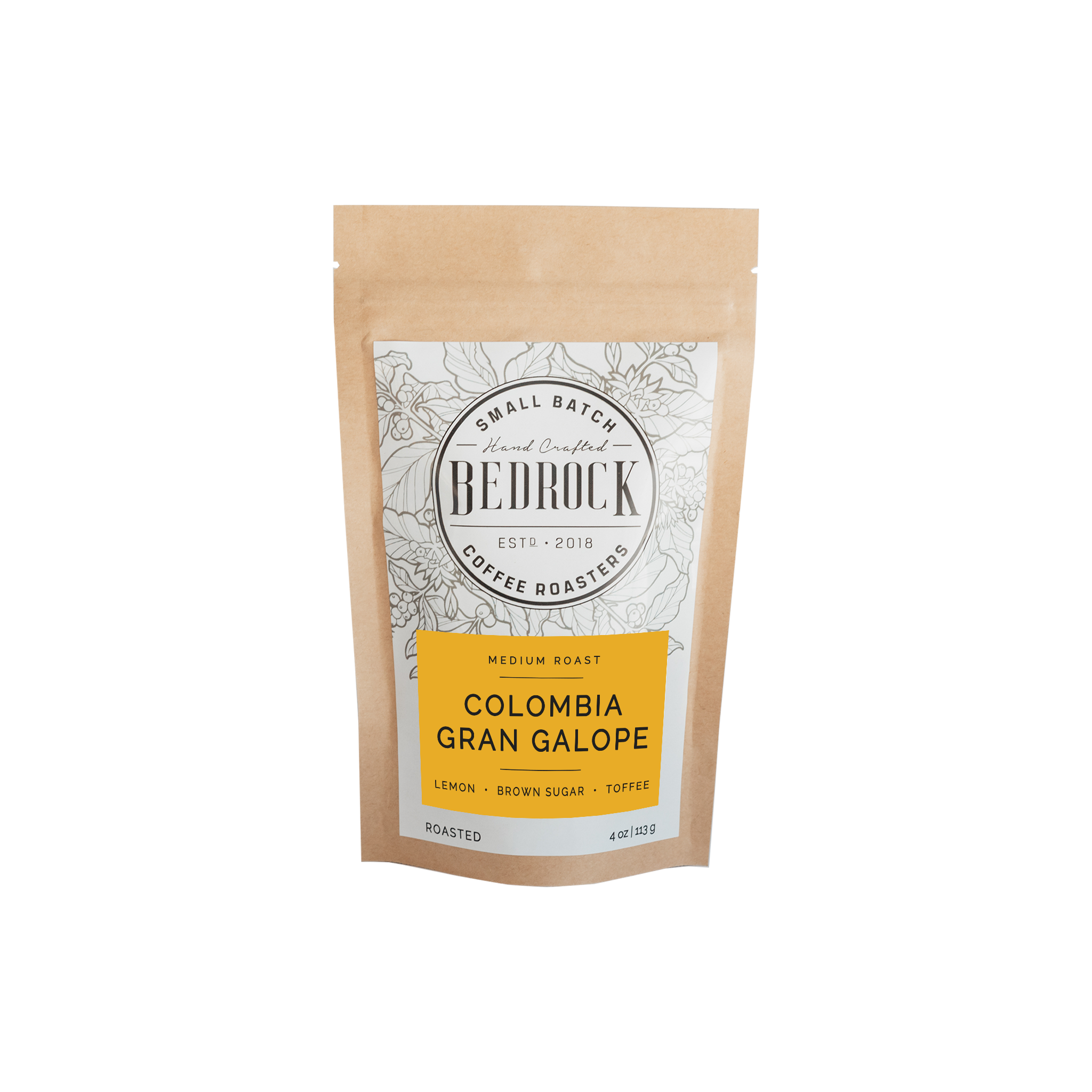Description
Colombian coffee is one of the most dynamic and recognizable coffee in the world. This offering features a blend of coffees from between 10 and 30 smallholder farms grown in the regions of Huila, close to the Pacific Ocean on the western side of Colombia. It is a dense bean, producing a rich flavor with notes of lemon, toffee and brown sugar for a complex cup with a smooth mouthfeel.
| Tasting Notes | Lemon, Toffee, Brown Sugar |
|---|---|
| Country of Origin | Colombia |
| Region | Huila |
| Farm | Various smallholder farmers |
| Altitude Grown | 1400-2000 MASL |
| Variety | Colombia, Castillo, Caturra |
| Process | Washed |
Country: Colombia

Coffee arrived in Colombia in the late 1700s with Spanish colonists, and commercial production started in the early 1800s. In the 19th century, coffee plants spread throughout the country, with smaller farms than in other Latin American countries. In 1927, the establishment of the Federación Nacional de Cafeteros de Colombia boosted the industry, making Colombia a major coffee producer. Despite setbacks due to coffee-leaf rust in the early 2010s, disease-resistant plants and preventative techniques helped production bounce back. Colombia produces exclusively Arabica coffee and competes with Brazil and Vietnam for the title of top global producer.
Region: Cauca

Cauca is in central-western Colombia, stretching from the Western Cordillera mountain range to the Pacific Ocean. Ocean winds and elevation result in Cauca being one of the coolest regions of the country. The coffee in this area is grown mostly by indigenous or Afro-descendant communities. Geographically, the region has many features including the Popayan Plateau, many rivers, and the central volcanic mountain range.
Gran Galope Program

Gran Galope is a program that allows Cafe Imports to buy more high-quality coffee from hardworking Colombian producers. These lots are Excelso grade coffees with a balance of sweetness, fruity effervescence, and cocoa and/or toffee notes. Most offerings are a blend of coffees from 10-30 smallholder farmers and are traceable to the region. Gran Galope selections from different regions are cupped and purchased locally. This program was born out of Regional Select, which highlights the distinct regional differences in Colombian coffee.
Colombia Sourcing

Cafe Imports' approach to sourcing Colombian coffees is relationship-based. The majority of their Colombian coffees come from long-standing partnerships that have developed over time. The green buying team travels to Colombia multiple times a year, visiting farms, meeting producers, and cupping coffees. They also connect roasters with producers through origin trips and events like "Best Cup," resulting in joyful partnerships between roasters and producers.
Variety

Although this offering is not traceable to a specific variety, the most commonly grown coffee varieties in Colombia are Castillo, Caturra and the Colombia variety. This lot is representative of this blend of popular varieties, two of which (Castillo and Colombia) were developed by CENECAFE — the agronomical research arm of Colombia's FNC.
Process

Washed coffees are the hallmark of Colombian coffee. After harvesting, the coffee is depulped and fermented in open-air tanks or buckets for 12-36 hours. The coffee is then washed clean of its mucilage and dried on patios, in dryers, or mechanically, with slight variations depending on the farm or association. Some Washed coffees in Colombia are mechanically demucilaged.





